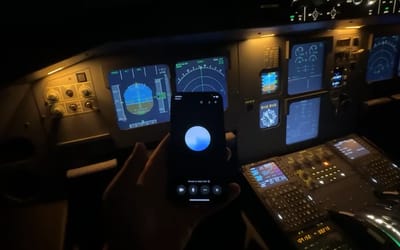The Tesla Model S with 250,000 miles takes so long to charge you might not want one
- This YouTuber put a Tesla Model S with 250,000 miles to the test
- He tested how quickly a well-used EV battery would fully charge
- The outcome might make you change your opinion on high-mileage EVs
Published on Feb 24, 2025 at 10:43 PM (UTC+4)
by Daisy Edwards
Last updated on May 15, 2025 at 7:10 PM (UTC+4)
Edited by
Emma Matthews
This battery test of a Tesla Model S with 250,000 miles was quite disappointing, and could make you reconsider your views on high-mileage EVs.
Like most things powered by batteries, their efficiency and usefulness degrade over time as the battery itself degrades. And EVs aren’t immune to this.
To see how much the battery in an EV degrades over time, a YouTube channel put a 250,000 mile Tesla Model S to the test. But the results were disappointing to say the least.
Unfortunately, this could put people off purchasing electric – people want cars that last. However, the way the battery charges could mean you’re looking at it all wrong.
DISCOVER SBX CARS: The global premium car auction platform powered by Supercar Blondie
The Tesla Model S battery and its ‘fast charge’
Ryan from the team at YouTube channel Out of Spec Testing decided to test the charging capacity on an old EV with a lot of miles, to see if it is as efficient as it could be and whether EVs last.
They picked a 2019 Tesla Model S with 250,000 miles on it.
Then they set about measuring the time it took to charge from 10-100 percent.
The car took a whopping 2 hours and 41 minutes to fully charge.
Needless to say, that’s very disappointing performance, especially as they used a roadside Tesla supercharger.
However, all is not lost when it comes to high-mileage EVs.
Because if you didn’t need to charge the car’s battery to 100%, it would be a heck of a lot quicker.
All hope is not lost…
The staggering amount of time it took to fully charge the Tesla Model S battery is disappointing in comparison to newer models with newer batteries, and fewer miles.
However, over half of the almost three hours it took to charge was spent charging it from 80-100 percent.
And that’s because, as a battery fills up with charge, it slows down at the end of the charging session.
It actually only took around 45 minutes to charge to 80 percent, meaning that the battery had degraded a little bit.
But, it could still be a reliable run-around if you weren’t traveling very far.
This is a slightly disappointing outcome for EV fans, but electric transport is constantly evolving, so a longer-lasting battery can’t be too far over the horizon.
Daisy Edwards is a Content Writer at supercarblondie.com. Daisy has more than five years’ experience as a qualified journalist, having graduated with a History and Journalism degree from Goldsmiths, University of London and a dissertation in vintage electric vehicles. Daisy specializes in writing about cars, EVs, tech and luxury lifestyle. When she's not writing, she's at a country music concert or working on one of her many unfinished craft projects.




